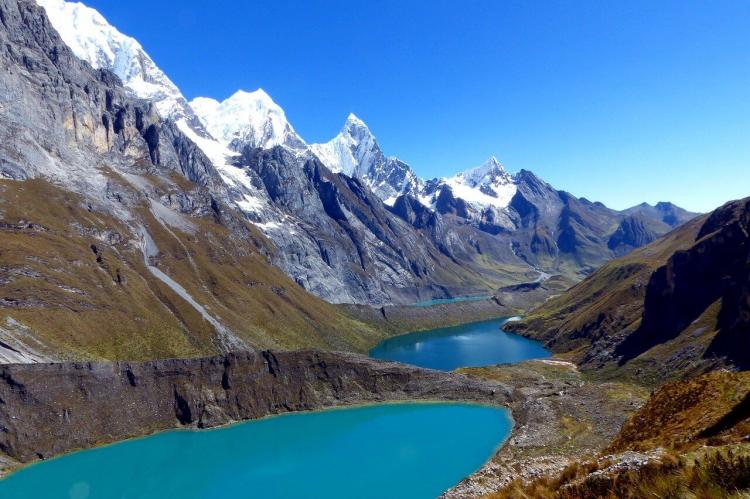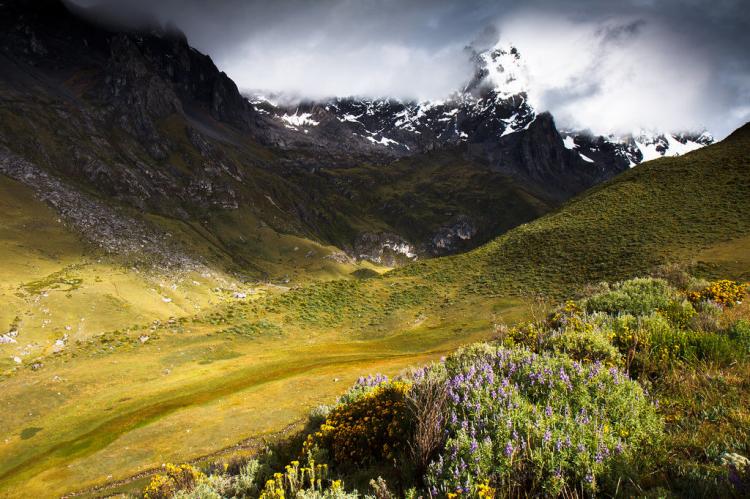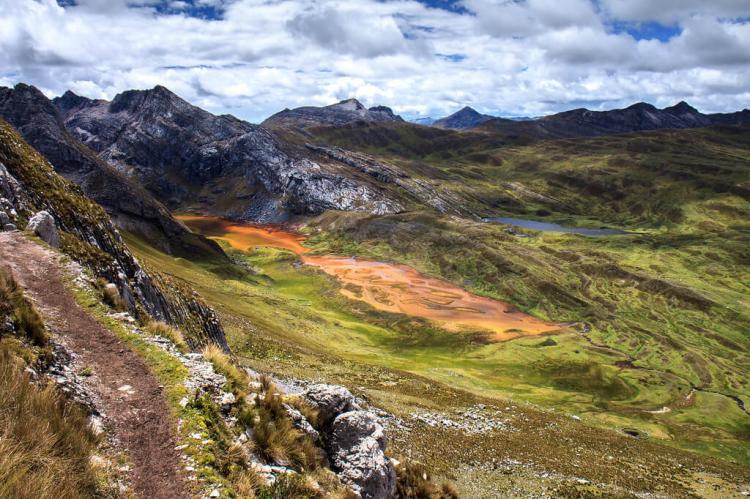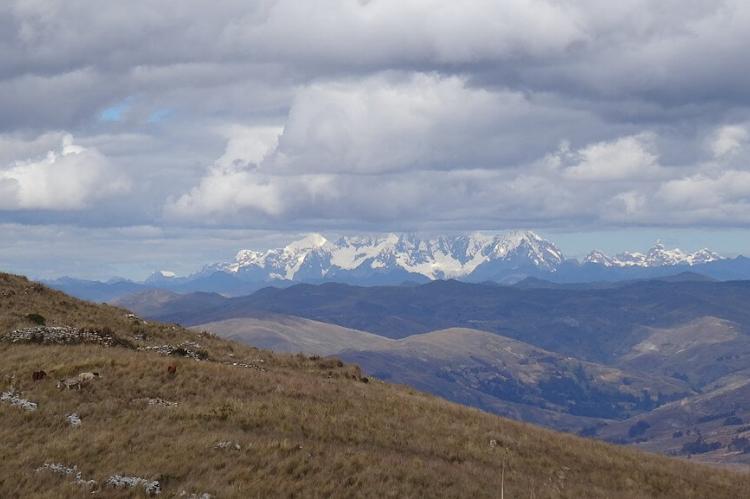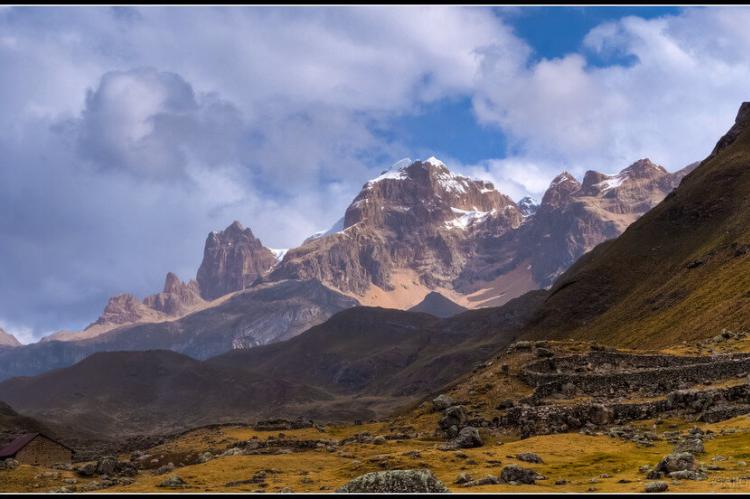Cordillera Huayhuash: Peruvian Andes (Peru)
The Cordillera Huayhuash is a mountain range within the Peruvian Andes. The range is a compact but spectacular cluster of summits comprising dozens of snowy peaks, considered by many adventure and nature lovers as one of the most spectacular trekking circuits in the Andes.
Cordillera Huayhuash
The Cordillera Huayhuash is a mountain range within the Peruvian Andes. The range lies south of the Cordillera Blanca within the boundaries of the Ancash, Lima and Huánuco.
The Cordillera Huayhuash is a compact but spectacular 30 km (18.6 m) long cluster of summits comprising dozens of snowy peaks, six of which are over 6000 m (19,685 ft). Its highest point is 6,634 m (21,765 ft) Yerupajá, Peru’s second-highest summit after Huascaran in the Cordillera Blanca. There is also an abundance of lakes, rivers and streams within the range.
Many adventure and nature lovers consider the Cordillera Huayhuash one of the most spectacular trekking circuits in the Andes. It is the site of the famous “Huayhuash Trek,” considered one of the “ten best treks in the world.”
Peaks over 6,000 m (19,685 ft) asl:
- Yerupajá: 6,634 m (21,765 ft)
- Siula: 6,344 m (20,814 ft)
- Sarapo: 6,127 m (20,102 ft)
- Jirishanca: 6,094 m (19,993 ft)
- Yerupaja Chico: 6,089 m (19,977 ft)
- Rasac: 6,017 m (19,741 ft)
Cordillera Huayhuash Reserved Zone
Since 2002, Cordillera Huayhuash has been protected within the Cordillera Huayhuash Reserved Zone, which prohibits certain economic activities, including future mining. Comprising 67,589 ha (167,000 acres), the area preserves high-elevation Andean grasslands and patches of forest.
According to the studies made by Roberto Arevalo of The Mountain Institute, there have been 272 species of plants identified in the Cordillera Huayhuash. In addition, there are 61 species of birds, 14 mammals, two amphibians and two fish. Ten of the bird species have been identified as being threatened by extinction.
The vegetated areas of the range are part of the Central Andean wet puna ecoregion. Some of the native tree species present include the Andean alder and those of the genus Polylepis.
Fauna found in the area includes the giant cone bill, the tit-like dacnis, the torrent duck, the Andean mountain cat, the taruca, the Andean condor, the peregrine falcon, the giant coot, etc.
